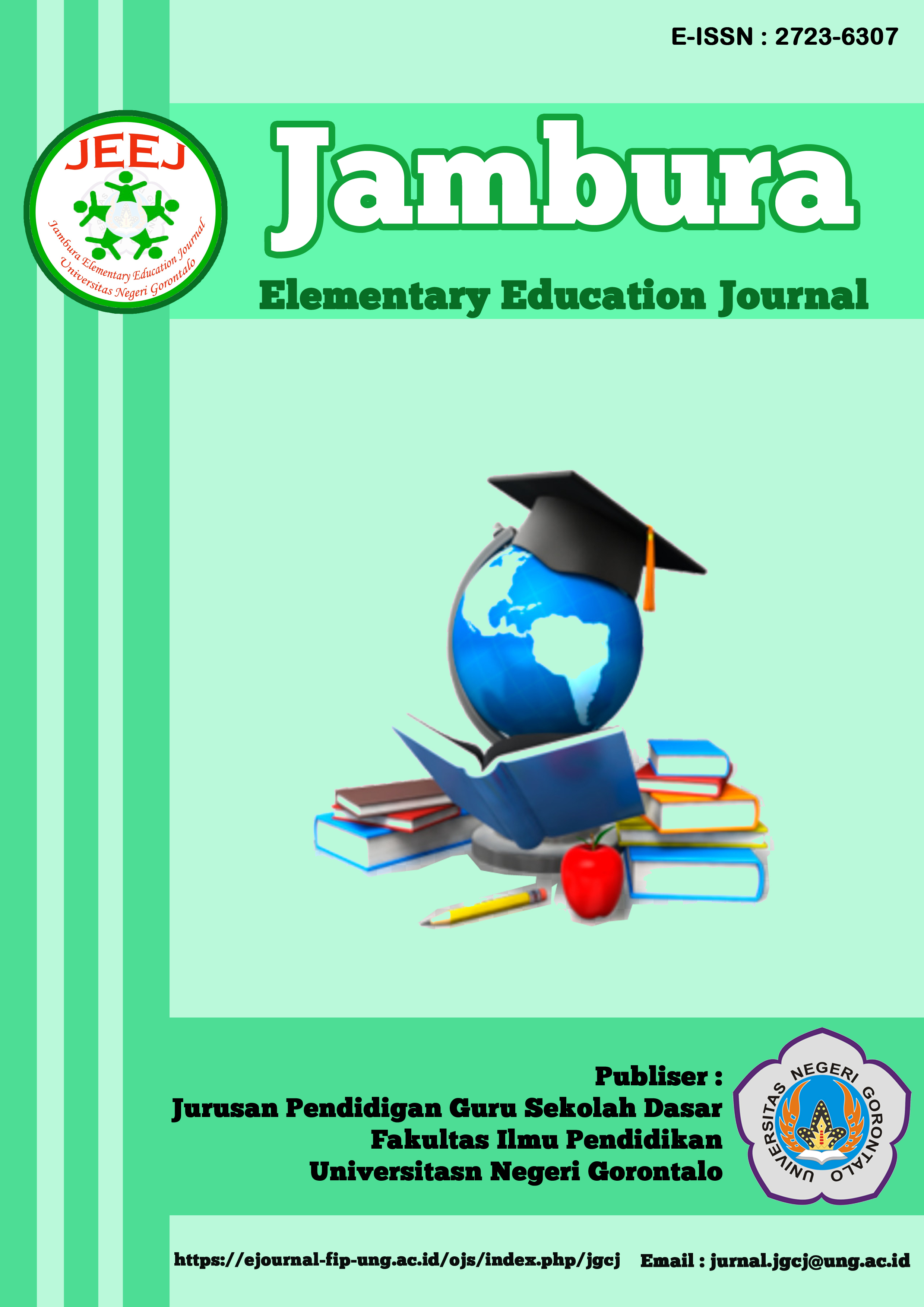ANALISIS KESALAHAN NUMERASI SISWA KELAS 2 SD DALAM MENYELESAIKAN SOAL AKM PADA DOMAIN BILANGAN
Abstract
This study aims to analyze the types of numeracy errors made by second-grade elementary school students in solving questions from the Minimum Competency Assessment (AKM) in the number domain. The research employed a descriptive qualitative method with data analysis based on the Newman Error Analysis (NEA) framework, which includes five categories of errors: reading, comprehension, transformation, process skills, and encoding. The research subjects were selected purposively based on indications of errors in answering numeracy questions. Instruments used included two AKM-style numeracy questions and semi-structured interviews to explore students’ understanding and thought processes. The results showed that the subject commonly made errors in comprehension, transformation, and process skills. The student struggled to understand the context of the questions, especially in identifying place value (units digit) and performing subtraction within real-life scenarios. Errors were also found in formulating appropriate final answers. These findings highlight the need for numeracy instruction that goes beyond procedural fluency to focus on contextual understanding and conceptual clarity. Teachers are encouraged to apply more interactive and diagnostic approaches in identifying and addressing students' conceptual misunderstandings from an early age.
References
Indraswara, W. T., Kusmaharti, D., & Yustitia, V. (2023). Analisis Kesalahan Siswa dalam Menyelesaikan Soal Numerasi Ditinjau dari Self Efficacy. Indo-MathEdu Intellectuals Journal, 4 (3), 1685-1708. http://doi.org/10.54373/imeij.v4i3.324
Kemendikbudristek. (2022). Asesmen kompetensi minimum: Literasi membaca dan numerasi. Pusat Asesmen Pendidikan, Badan Standar, Kurikulum, dan Asesmen Pendidikan.
Kemendikbudristek. (2022). Panduan pembelajaran dan asesmen: Pendidikan anak usia dini, pendidikan dasar, dan menengah. Badan Standar, Kurikulum, dan Asesmen Pendidikan.
Newman, M. A. (1977). An analysis of sixth-grade pupils’ errors on written mathematical tasks. In C. A. Lovitt & J. P. Clarke (Eds.), Mathematics for the 1970s (pp. 241–250). Melbourne: Australian Council for Educational Research (ACER).
Nurfadillah, A., & Setyawati, D. (2021). Analisis kesalahan siswa dalam menyelesaikan soal matematika berdasarkan Newman’s Error Analysis. Jurnal Pendidikan Matematika, 15(1), 35–48.
OECD. (2019). PISA 2018 results (Volume I): What students know and can do. OECD Publishing. https://doi.org/10.1787/5f07c754-en
Putri, Y. E., & Wahyuni, D. (2020). Analisis kesalahan siswa dalam menyelesaikan soal cerita matematika berdasarkan prosedur Newman. Jurnal Ilmiah Pendidikan Matematika, 8(1), 11–21.
Polya, G. (2004). How to solve it: A new aspect of mathematical method. Princeton University Press.
Susanto, H. (2021). Pengaruh pemahaman konsep bilangan terhadap kemampuan numerasi siswa SD. Jurnal Ilmu Pendidikan Dasar, 8(2), 112–120.
White, A. L. (2005). Active mathematics in classrooms: Finding out why children make mistakes – and then doing something to help them. Square One, 15(4), 15–20.
Widodo, S. A., & Jatmiko, T. (2022). Tantangan pembelajaran numerasi di sekolah dasar: Telaah kebutuhan guru dan kesiapan siswa. Jurnal Inovasi Pendidikan Dasar, 7(2), 101–112.
Copyright (c) 2025 Widi Candika Pakaya, Andi Marshanawiah, Nurain Karnain

This work is licensed under a Creative Commons Attribution-NonCommercial-ShareAlike 4.0 International License.







